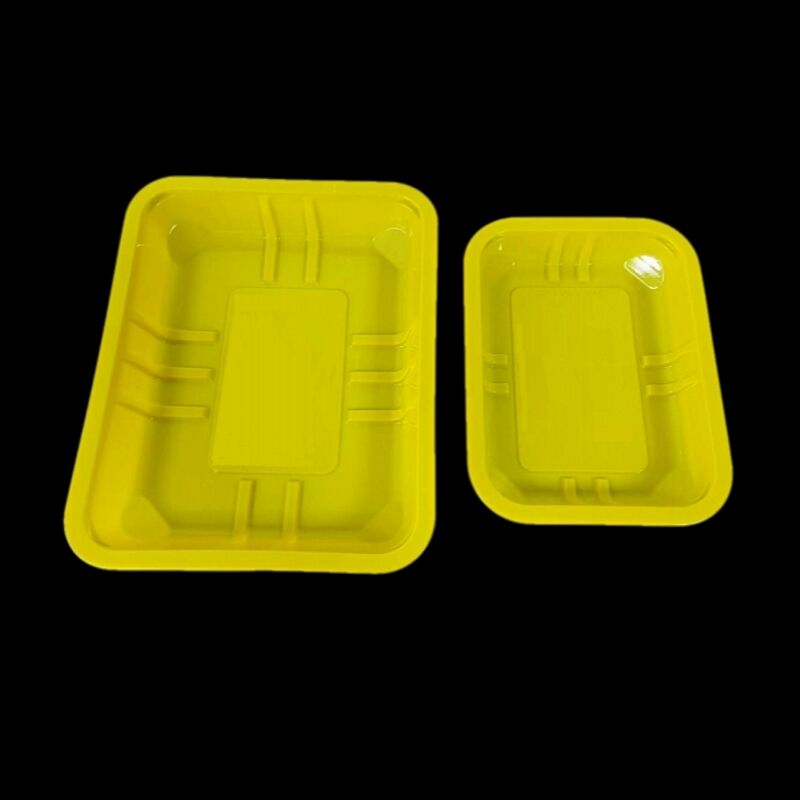The Science Behind Perfect Container Sealing
The effectiveness of a plastic lid in keeping contents fresh, preventing spills, and maintaining food quality relies on sophisticated engineering and material science. Modern plastic lids represent the culmination of decades of research and development in polymer technology and precision manufacturing. Understanding how these essential components work reveals why certain designs succeed while others fail at providing reliable containment.
Essential Components of Leak-Proof Design
Material Selection and Properties
The foundation of any effective plastic lid begins with proper material selection. High-grade polymers like polypropylene and polyethylene provide the ideal combination of flexibility and durability required for consistent sealing performance. These materials offer excellent chemical resistance while maintaining their structural integrity across a wide temperature range. The specific grade of plastic must balance rigidity for structural strength with enough elasticity to create a proper seal.
Advanced polymer blends may incorporate specialized additives that enhance specific properties such as impact resistance or temperature stability. These carefully formulated materials ensure the plastic lid maintains its sealing capabilities even under challenging conditions like microwave heating or freezer storage.
Precision Engineering of Sealing Mechanisms
The geometry of a plastic lid's sealing surface plays a crucial role in its effectiveness. Most modern designs utilize either a compression seal or an interference fit mechanism. Compression seals rely on a flexible gasket or lip that deforms under pressure to fill microscopic gaps. Interference fits create an airtight seal through precisely calculated overlapping surfaces that mechanically lock together.
Engineers must carefully consider factors like seal width, contact pressure, and surface finish when designing these mechanisms. Even microscopic variations in these parameters can significantly impact sealing performance. Advanced computer modeling helps optimize these designs before production begins.
Manufacturing Excellence in Lid Production
Quality Control Standards
Maintaining consistent quality in plastic lid production requires rigorous manufacturing controls. Modern facilities employ advanced injection molding systems with precise temperature and pressure monitoring. Each production batch undergoes extensive testing to verify dimensional accuracy and sealing performance.
Quality assurance protocols typically include leak testing, compression strength evaluation, and durability assessments. These measures ensure every plastic lid meets strict performance specifications before reaching consumers.
Surface Treatment and Finishing
The microscopic surface characteristics of a plastic lid significantly influence its sealing capability. Advanced manufacturing processes may include surface treatments to optimize friction coefficients and enhance sealing performance. Special texturing patterns can improve grip while maintaining seamless contact along sealing surfaces.
Post-molding operations might involve deburring, polishing, or applying specialized coatings to improve functionality. These finishing steps ensure consistent performance across various usage conditions.
Innovation in Sealing Technology
Smart Material Applications
Recent developments in material science have introduced new possibilities for plastic lid design. Temperature-responsive polymers can automatically adjust their properties to maintain optimal sealing pressure across varying conditions. Some materials incorporate antimicrobial properties to enhance food safety and extend storage life.
Innovative composite materials combine multiple polymers to achieve superior performance characteristics. These advanced materials often provide better resistance to deformation while maintaining excellent sealing properties.
Enhanced Design Features
Modern plastic lid designs increasingly incorporate user-friendly features without compromising sealing integrity. This includes easy-grip patterns, venting mechanisms for microwave use, and visual indicators for proper closure. Some designs feature multiple sealing zones for redundancy and improved reliability.
The integration of these features requires careful balance between convenience and functionality. Engineers must ensure additional features don't create potential leak points or compromise the primary sealing mechanism.
Environmental Considerations and Sustainability
Eco-Friendly Materials
The push for sustainability has led to significant innovations in plastic lid materials. Manufacturers now offer options made from recycled plastics or bio-based polymers that maintain the same high-performance standards. These materials must still provide reliable sealing while reducing environmental impact.
Research continues into biodegradable alternatives that offer comparable sealing performance. The challenge lies in developing materials that decompose after disposal while maintaining stability during the product's useful life.
Design for Recyclability
Modern plastic lid design increasingly considers end-of-life recycling. This includes using single-material construction where possible and designing for easy separation of components. Some manufacturers now incorporate recycling indicators and instructions directly into the lid design.
The focus on recyclability must balance with maintaining optimal sealing performance. Innovative design approaches help achieve both objectives without compromise.
Frequently Asked Questions
How long should a plastic lid maintain its sealing properties?
A quality plastic lid should maintain effective sealing properties for at least 1-2 years under normal use conditions. However, this can vary depending on usage patterns, cleaning methods, and storage conditions. Regular inspection for signs of wear or damage can help ensure continued performance.
What causes a plastic lid to lose its airtight seal?
Several factors can compromise a plastic lid's sealing ability, including physical damage, exposure to extreme temperatures, chemical degradation from certain foods or cleaning agents, and normal wear from repeated use. Proper care and handling can significantly extend the functional life of the seal.
Can a warped plastic lid be restored to proper function?
Minor warping sometimes can be corrected by gently heating the lid and allowing it to cool in its proper shape. However, severely warped or damaged lids should be replaced to ensure safe and reliable food storage. Prevention through proper use and care is the best approach.

